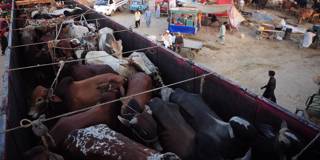
Tackling Pandemics at Their Root
Lax or non-existent regulation of animal markets is what started the COVID-19 crisis. If we don’t act on that lesson quickly, we may very soon have to learn it again.

Lax or non-existent regulation of animal markets is what started the COVID-19 crisis. If we don’t act on that lesson quickly, we may very soon have to learn it again.
BOSTON – Cattle colonies and “wet markets” for live animals are not unique to Wuhan, the Chinese city where the SARS-CoV-2 virus most likely originated. They exist all around the world. And given their largely unregulated nature, the emergence of the next major infectious pathogen is only a matter of time.